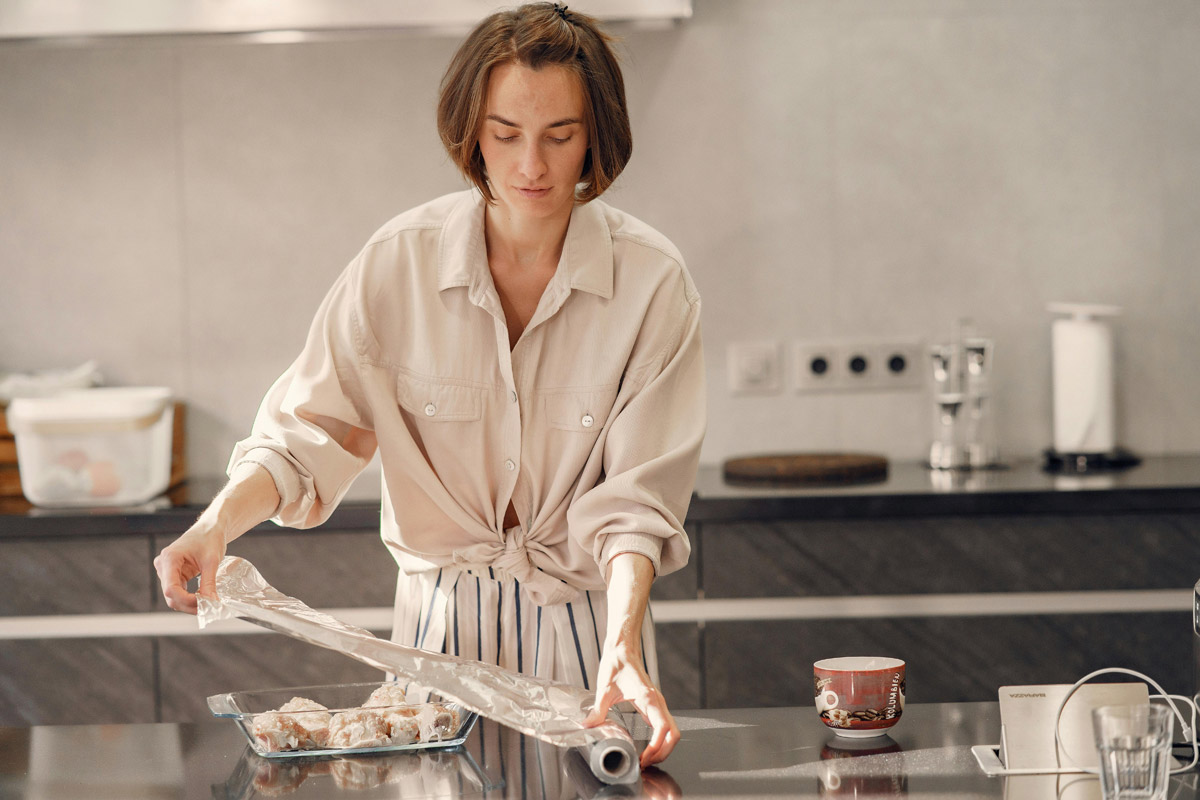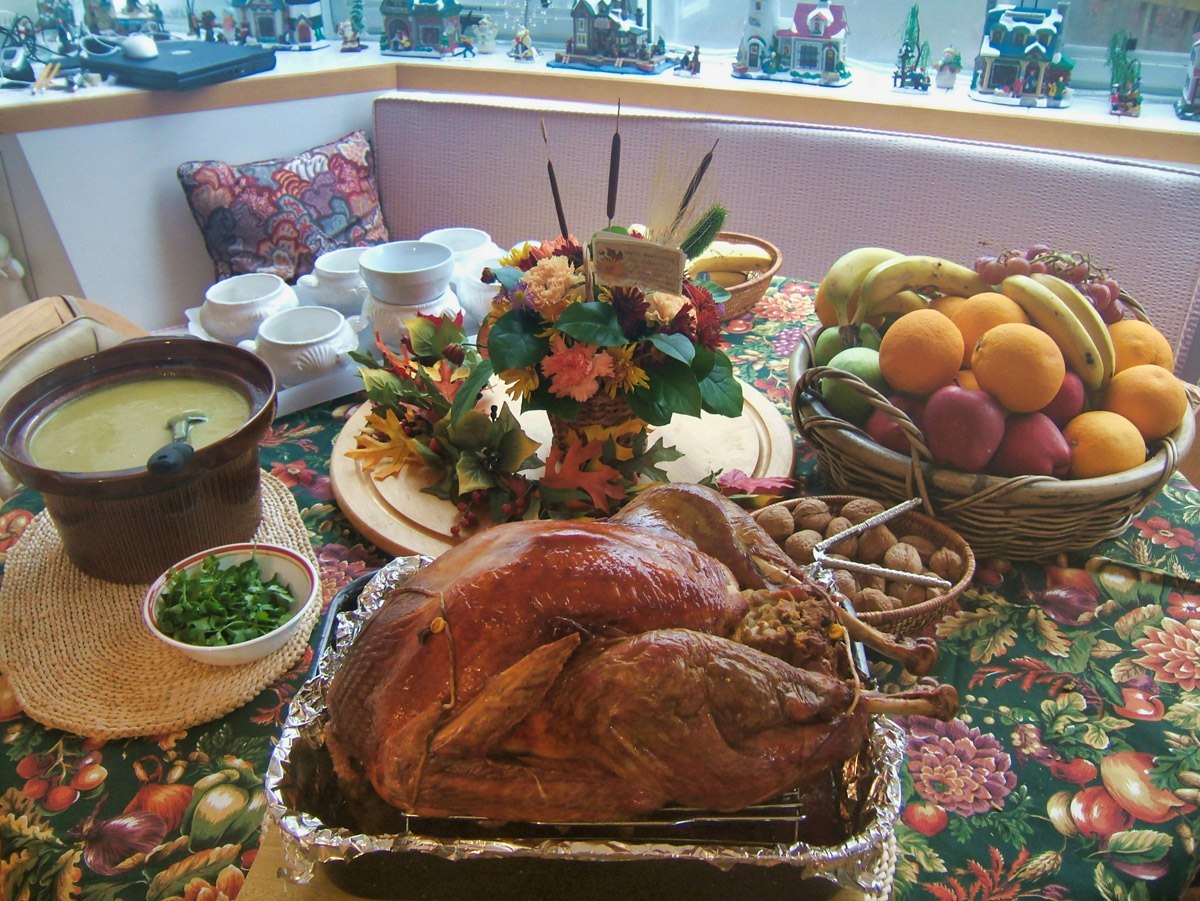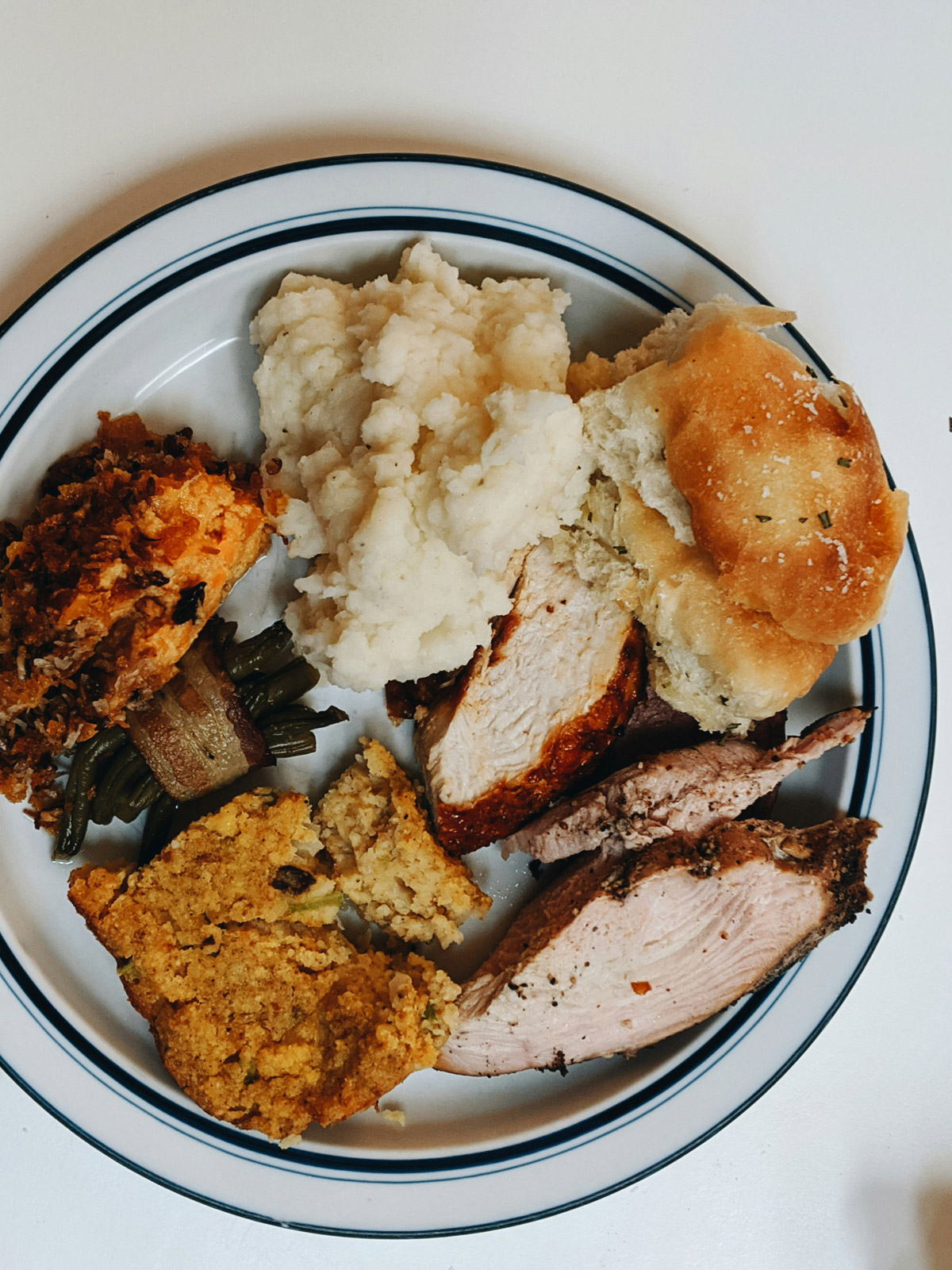
We are at T minus one day to Thanksgiving; wherever you are (or are not) in your preparations, take a deep breath with me! While it may be hard to imagine getting to the other side of the turkey now, we’re also roughly at T minus one-and-a-half days to a massive amount of leftovers ready to be divvied up amongst multiple parties going to several homes. This is why food safety expert Zachary Cartwright from the Institute of Food Technologists wants to ensure we are armed with the dos and don’t of using that handy kitchen tool, aluminum foil, aka tinfoil. (Aside, of course, from the fact that it only matters which side you use if it’s non-stick tinfoil, we already knew that!) And the long and short of it is, tinfoil can be OK for short-term storage — about two days max — but it’s not meant for the long haul, mainly thanks to tinfoil’s inability to form an airtight seal.
Unlike other popular methods of storing leftovers—like in plastic bags and Tupperware—foil cannot create an airtight seal. This means that no matter how tightly you manage to wrap your food with foil, some air will still get in.
Proper food storage decreases the risk of bacteria growth by limiting exposure to air and preventing moisture loss. Aluminum foil excels at neither.
“Aluminum foil alone cannot create a completely airtight seal because it’s not inherently adhesive and [it] doesn’t conform perfectly to surfaces,” explains Zachary Cartwright, Lead Food Scientist for AQUALAB by Addium and member of the Food Safety and Quality Management Division at the Institute of Food Technologists (IFT).
The Centers for Disease Control (CDC) warns that the presence of air can help potentially dangerous bacteria such as staphylococcus (staph) and Bacillus cereus, which can thrive in the conditions created by tinfoil storage, grow faster.
The CDC estimates that about one in every four people carry staph on their skin and in their nose. Food can become contaminated with staph if people who carry the bacteria touch it without first washing their hands. Staph can multiply in food and even make a toxin that causes food poisoning even after cooking.
Cartwright said that improper aluminum foil storage also increases the risk of foodborne illnesses including Clostridium botulinum and Listeria monocytogenes. Though rare, both of these can result in serious illness.
Improper food storage can lead to other health hazards as well, including chemical reactions and contamination.
According to Cartwright, aluminum can react with acidic (think tomato sauce) or salty foods, causing leaching of aluminum into the food. This may alter the food’s taste and increase aluminum intake, which is linked to health concerns if consumed in large quantities over time.
If you must use aluminum to store food, limit it to short periods (no more than two days). Avoid wrapping hot or warm foods directly in foil. Instead, let food cool to room temperature or refrigerate quickly. Cartwright also recommends double wrapping with foil or starting by wrapping the food in a layer of plastic wrap.
[From Southern Living via Yahoo]
Oh man, this article took me back to an early memory of being in the kitchen with my mother as a little kid when she abruptly turned to me and said, “Air is the enemy of food!” Yes, ma’am! And to further give my mama credit, whenever she does use tinfoil, she first covers the food with parchment paper as a buffer, like the expert here suggests. But yes, glass or BPA-free plastic containers are the gold standard for storage. Unless you know the leftover will be eaten within two days, and the food is not acidic, then tinfoil will suffice, especially if you cool the food before covering. I didn’t know that last bit, but the science behind it is that bacteria have an easier time being fruitful and multiplying in temperatures between 40°F to 140°F, what’s referred to as the “danger zone.” (Who coined the term first, food scientists or Kenny Loggins?)
Another tip the article suggested was good old fashioned labeling and dating your containers and/or tinfoil. Which again brings me back to a kitchen of my childhood, this time my grandmother’s. I can recall at least two occasions when my mother had finally had enough and took it upon herself to tackle the biohazardous minefield of unlabeled, irregularly-shaped tinfoil clumps occupying that refrigerator. Several items were a couple presidencies old. Don’t let this happen to your family!
Photos credit: Christopher Ryan, Casey James and David Trinks on Unsplash, Gustavo Fring on Pexels


